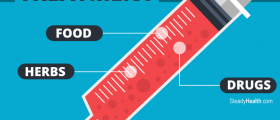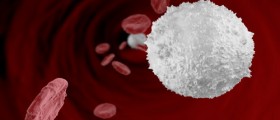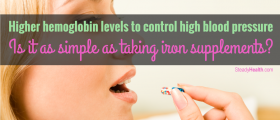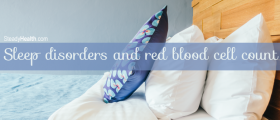
Red blood cells, also known as erythrocytes, are the sort of blood cells that primarily serve to deliver oxygen to the body cells. Cytoplasm of red blood cells is rich in hemoglobin. Hemoglobin is the iron-containing oxygen-transport metalloprotein capable to bind oxygen and carry it through the bloodstream. Due to the presence of hemoglobin in the certain blood cells, blood has its characteristic red color.
Human red blood cells
Human erythrocytes are shaped like a small disk 6–8 µm in diameter and somewhere around 2 µm thick. An adult human has approximately 20-30 trillion red blood cells in the body. Each human red blood cell contains just about 270 million of hemoglobin biomolecules. Hemoglobin is responsible for the carrying of more than 98% of all oxygen used by the cells.
Red blood cells in humans are produced from stem cells, in the process known as erythropoiesis. It takes approximately 7 days for one cell to develop into an erythrocyte. The normal life cycle of each red blood cell is somewhere around 100 to 120 days. A healthy adult organism may produce about 2 million erythrocytes per second. This cycle of reproduction is constant and it takes place in the bones. Since the human body produces new blood all of the time, it is advisable for healthy adults to donate blood from time to time. Blood donation may help with iron overload and thus significantly lower the risk of certain diseases associated with formation of free radicals.
Oxygen carrying function
This is the principle function of red blood cells. Erythrocytes are capable of binding the oxygen from the lungs and carry it through the body. As the blood leaves the heart it enters the aorta and collects the oxygen form the lungs. The oxygen is absorbed through the little alveoli the lungs and delivered from the blood stream to the muscles, tissues and organs in the body.
Carbon dioxide carrying function
On the way back, the blood travels through the complex system of veins, carrying carbon dioxide. Carbon dioxide is a waste product of metabolism in the body. Red blood cells may transport the carbon dioxide back to the environment, by carrying it to the lungs where the body releases carbon dioxide as humans breath out.
One single red blood cell completes this cycle of this oxygen exchange for about 30-45 seconds. The pace where one cell carries the oxygen depends on numerous factors. Sometimes, it may be affected by the ph of the blood, body temperature or presence of other elements in the bloodstream (like carbon-monoxide or hydrogen-sulfide). High environmental stress may affect the red blood cells and their ability to carry oxygen.
















Your thoughts on this
Loading...